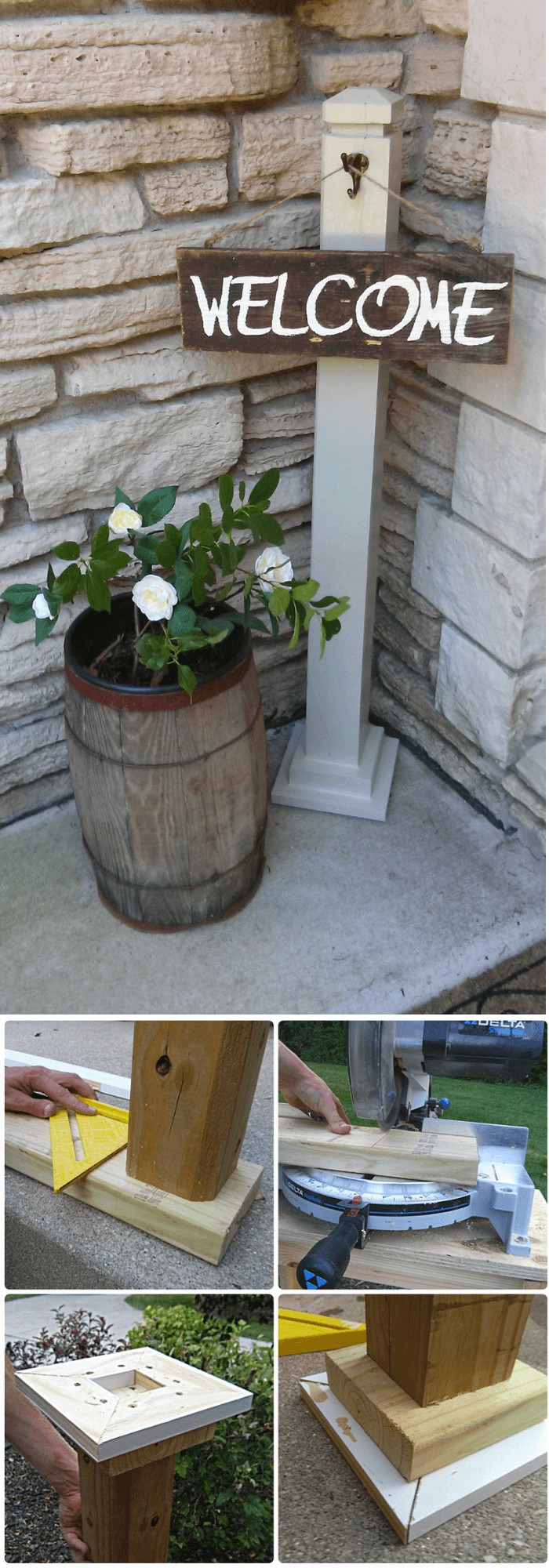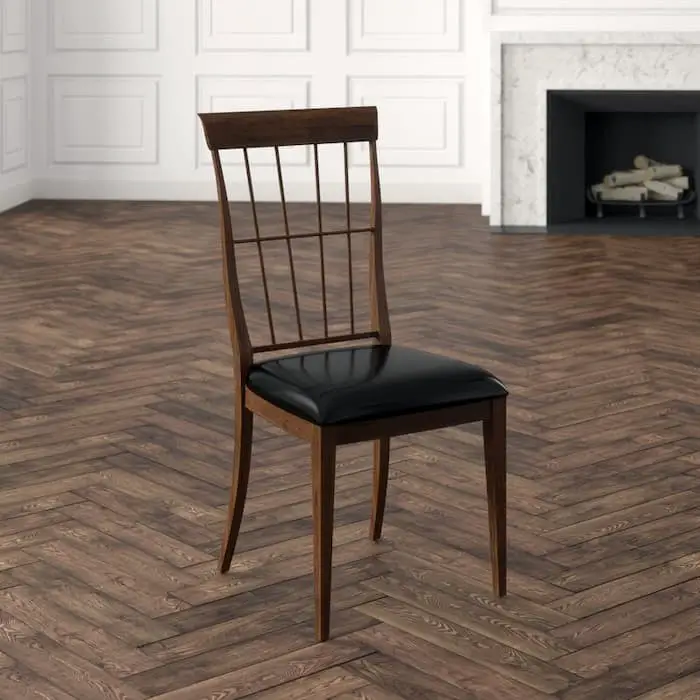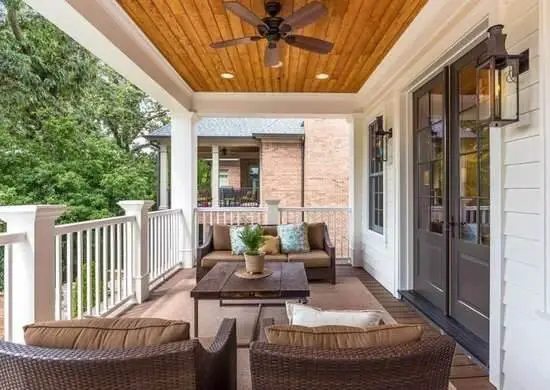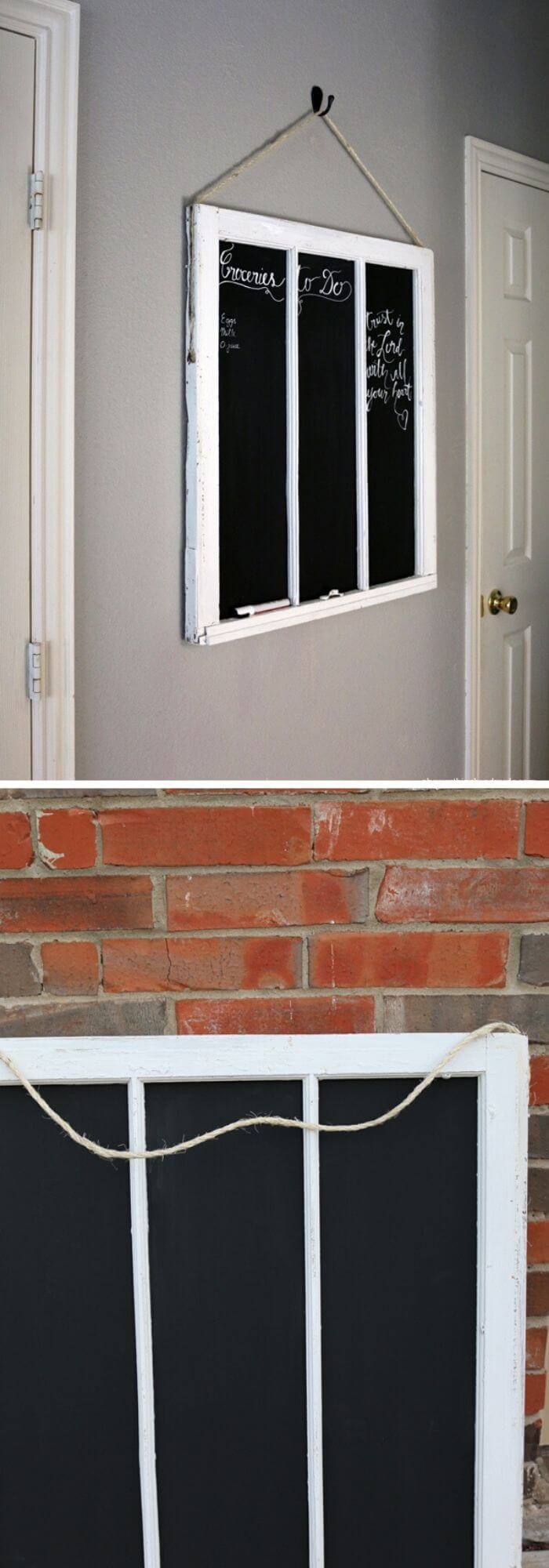35+ Best Basement Home Gym Ideas And Designs On A Budget (Photos)
As you work out at home, the right atmosphere can make all the difference – mentally and physically. A well-designed home gym can even help you achieve your fitness goals faster. While workout equipment isn’t typically associated with style, it’s possible to create a sophisticated and functional space that motivates you to get moving. With many people opting to exercise at home rather than venturing out to gyms, having the right setup in your basement can be a game-changer.
With so much space available, you can set up a home gym that suits your needs and keeps you motivated. In this article, we’ll explore 35 ideas and designs for a budget-friendly basement home gym. From selecting a color scheme to incorporating an indoor pool, we’ll cover it all. Whether you’re looking for functional storage solutions or inspiration for your workout space, we’ve got you covered.
35 Basement Home Gym Ideas and Designs On a Buget
Select a Color Scheme That Is More Elevated
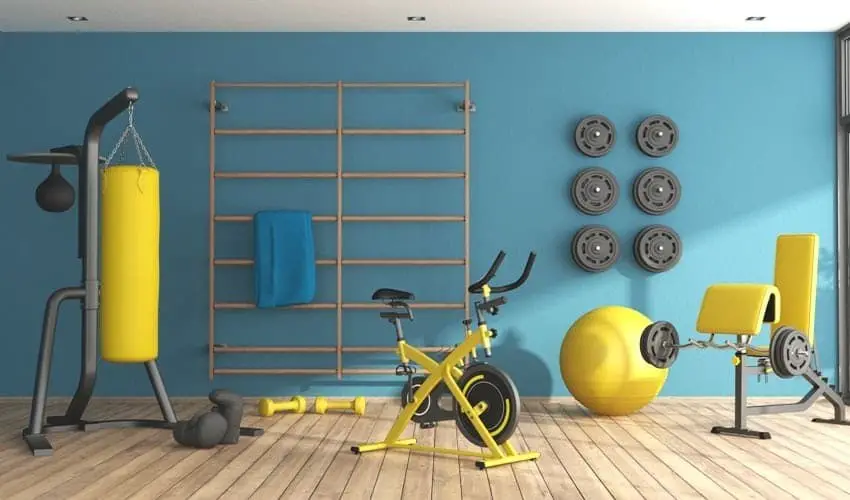
Transform your home gym into a sophisticated space by adopting a consistent gray color palette for both walls and training equipment. This cohesive approach elevates the overall aesthetic without compromising functionality. To further enhance the area, consider incorporating a full-length mirror that not only helps improve posture but also creates an illusion of more space, perfect for cramped basements or tiny gyms.
Set the Right Atmosphere
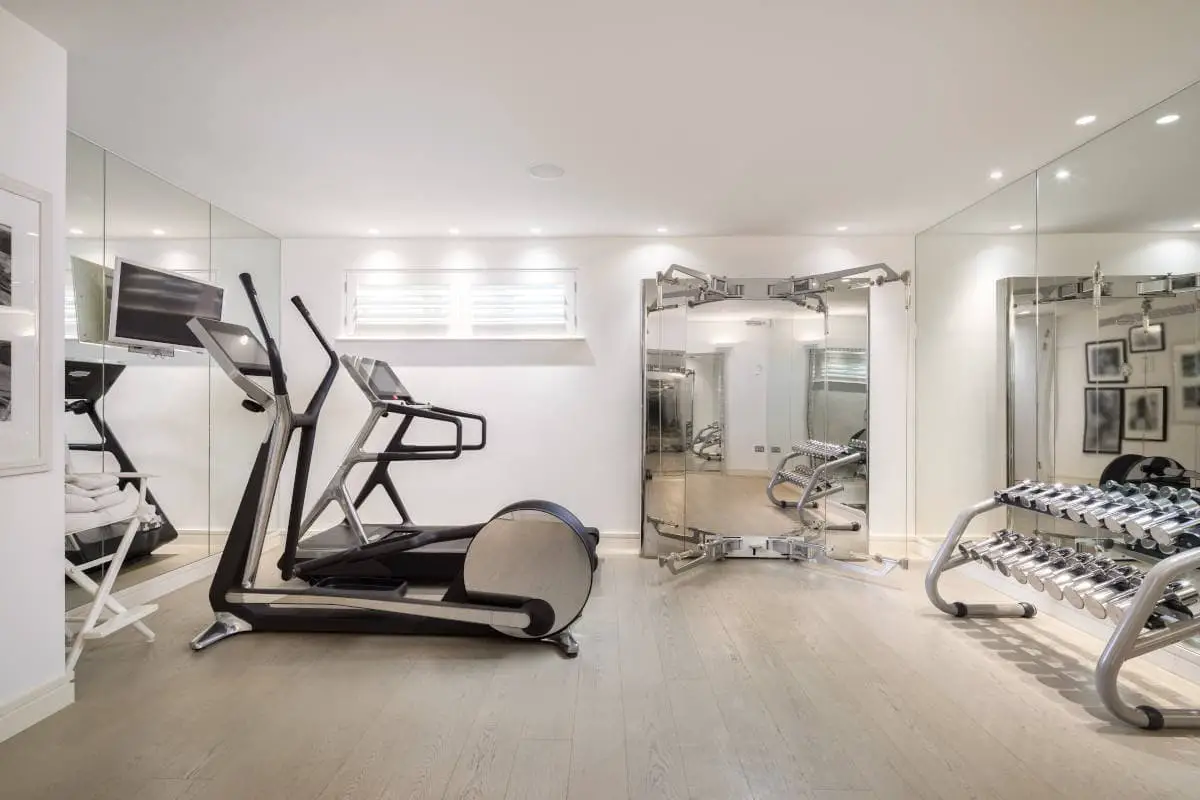
When designing your space, consider how you’ll utilize the area to create an atmosphere that fosters motivation and relaxation. To achieve this, incorporate elements that bring nature indoors. For instance, adorn the walls with lush foliage, ornate wave-like wallpaper, and a statement wood piece. This harmonious blend will cultivate a peaceful ambiance, perfect for restorative yoga and other mat-based exercises.
Take into consideration an indoor pool.
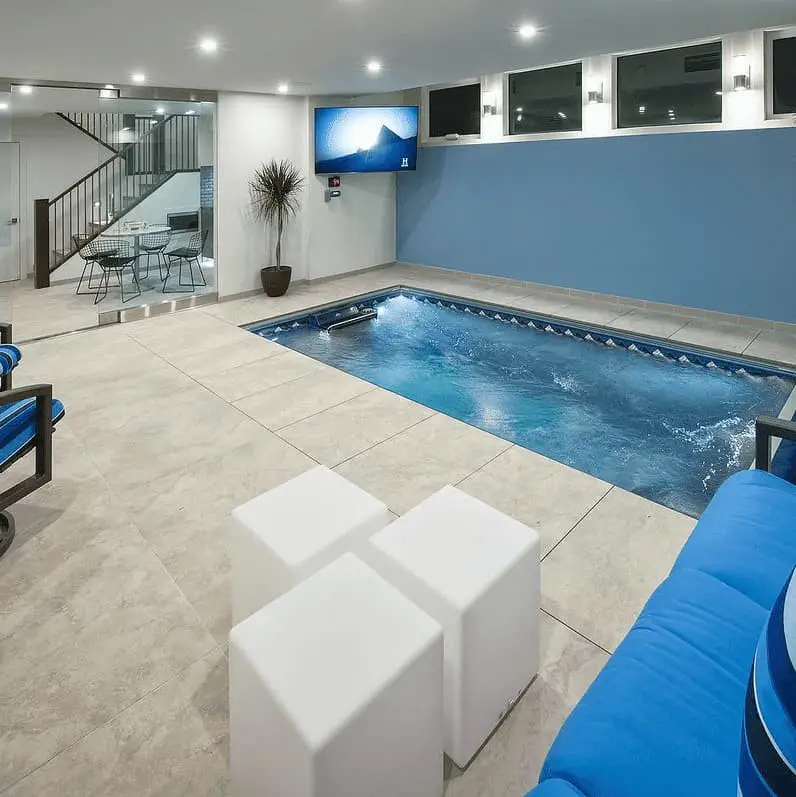
The basement area has been transformed into an inviting oasis thanks to the circadian rhythm lighting, which subtly adjusts its hue and internal clock to create a serene ambiance. The result is a trendy and tranquil interior swimming pool space that exudes sophistication. To make the most of the limited floor layout and accommodate multiple laps, consider opting for a sleek and lengthy design that stretches from corner to corner.
For added excitement, install a jet feature that allows you to swim against the current, perfect for those who crave a more intense aquatic experience.
Mirror Wall at a Reasonable Price
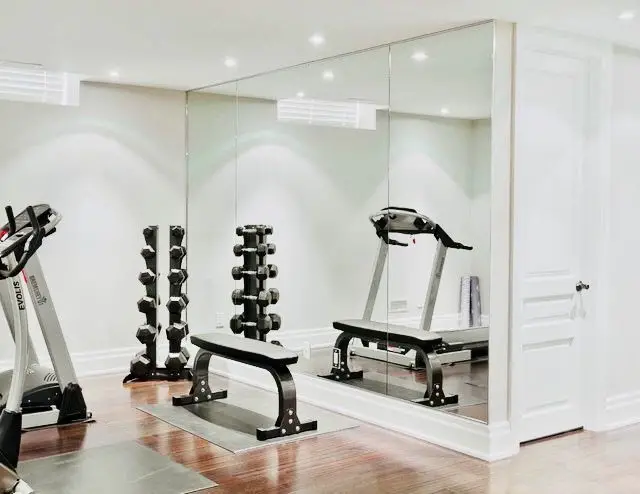
Gyms frequently install mirrored windows along their walls, offering a range of advantages for exercisers. Beyond providing a means to track progress and monitor technique, these mirrors enable individuals to maintain proper form during workouts. Moreover, the motivational boost gained from admiring one’s physical appearance in motion can be an invaluable mental and emotional benefit – so take advantage of this added encouragement while you’re still getting those endorphins pumping!
Squat Rack Made From Wood

Any basement gym worth its salt requires a squat rack as an essential component. But, these racks can be pricey, cumbersome, and expensive to ship. That’s why building your own squat rack is a viable alternative. However, it’s crucial not to take shortcuts in the construction process. A sturdy squat rack should be able to withstand weights far heavier than what you’re capable of lifting, ensuring both safety and durability.
Storage on the Wall Saves Space
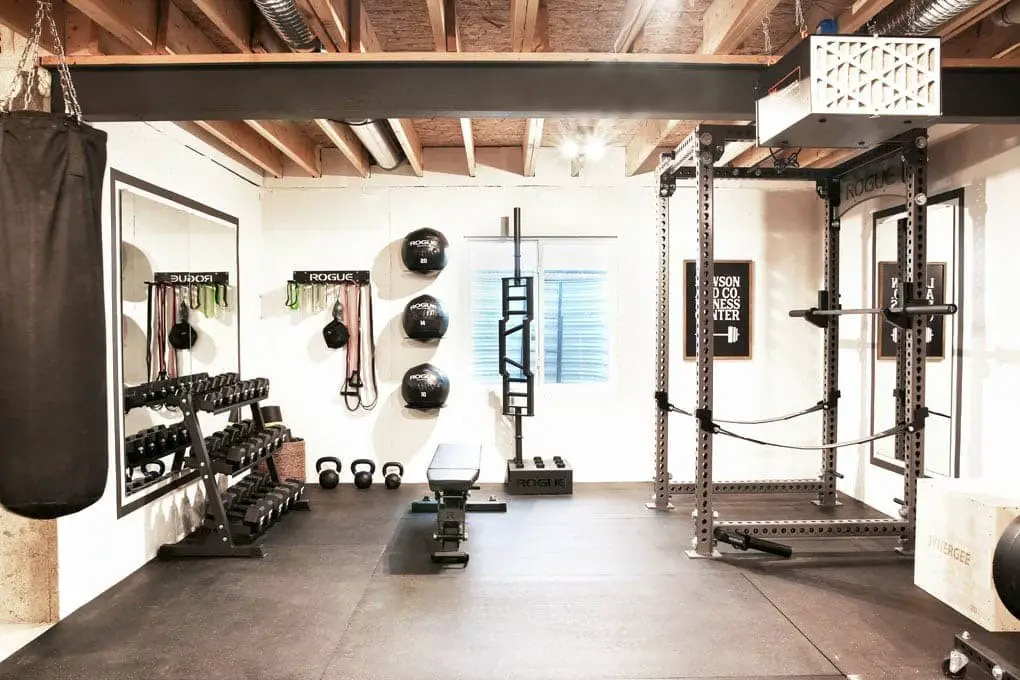
When designing a basement gym, space constraints are inevitable. A cluttered floor can significantly reduce the available workout area. To maximize your space, consider strategically storing equipment and accessories on walls. While this may require some creative problem-solving, utilizing shelves, hooks, pegs, cubbies, and other wall-mounted storage solutions can help optimize your setup.
A major piece of equipment should be the focal point of your gym.

When designing your home gym in the basement, it’s essential to prioritize functionality over density. Rather than trying to cram as many pieces of equipment as possible into the space, focus on selecting one or two key assets that will allow you to work multiple muscle groups and areas effectively.
A power rack is an excellent example of a versatile piece of equipment that can be used for a wide range of exercises, allowing you to target various body parts without needing to dedicate separate stations for each. To maximize the versatility of your chosen equipment, consider experimenting with different movements and attachments to keep your workouts fresh and engaging.
Your Mood is Improved by a Beautiful View
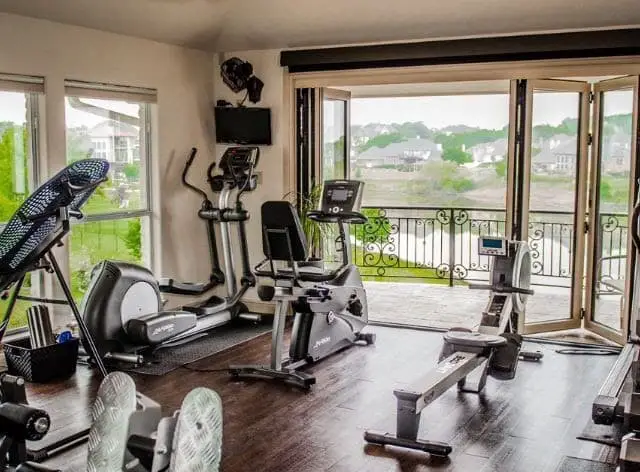
While your basement might not offer breathtaking views, that’s no reason to settle for a dull environment. Instead, tap into your creativity and bring a little joy inside. Consider installing an aquarium, which can provide hours of calming entertainment, or hang some uplifting artwork that always puts you in a positive mood when you gaze at it. By doing so, you’ll transform the space from drab to fab, making it a place where you actually want to spend time.
Utilize whatever available space
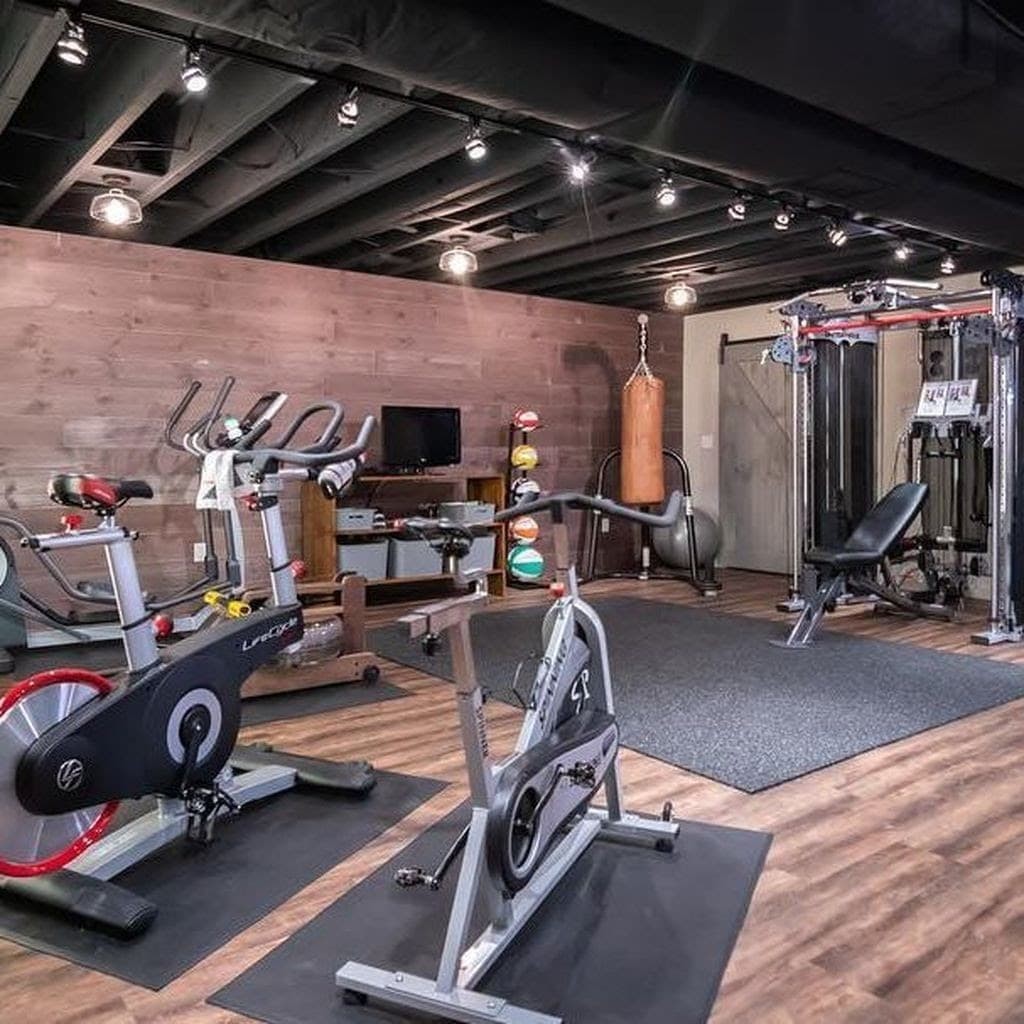
In reality, our idealized expectations often clash with the harsh realities of limited space. Rather than bemoaning the lack of square footage, we can choose to work with what we have, repurposing every nook and cranny to accommodate our diverse needs and interests. It’s not about having an abundance of spare rooms, but rather learning to creatively utilize the space we do have.
When it comes to fitness, think functional.
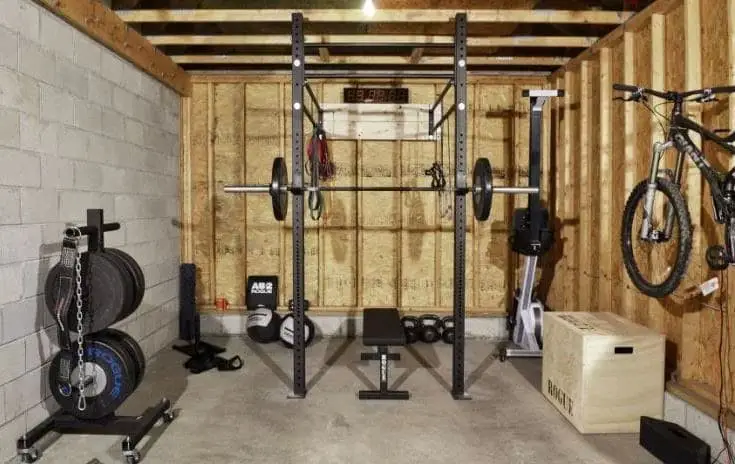
Transforming your basement gym is an opportunity to create a space that perfectly aligns with your fitness goals. You can design it as a weightlifting haven, if that’s what motivates you. Alternatively, you might prefer a more holistic approach, focusing on essential equipment that enables a variety of exercises catering to maintaining and improving flexibility, range of motion, and overall well-being.
By doing so, you’ll be able to create a gym that not only meets your physical needs but also promotes long-term health and wellness.
Don’t Forget About the Children’s Section!
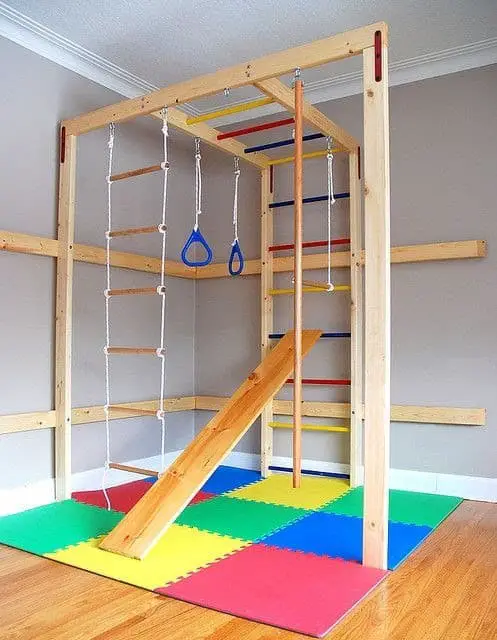
As you design your basement gym, consider involving your kids from the start. Their curiosity and love for imitating what they see can be leveraged to create a lifelong interest in fitness. By getting them on board early, you’re not only encouraging their physical activity but also instilling healthy habits that will benefit them throughout their lives.
Wall with Chalkboard
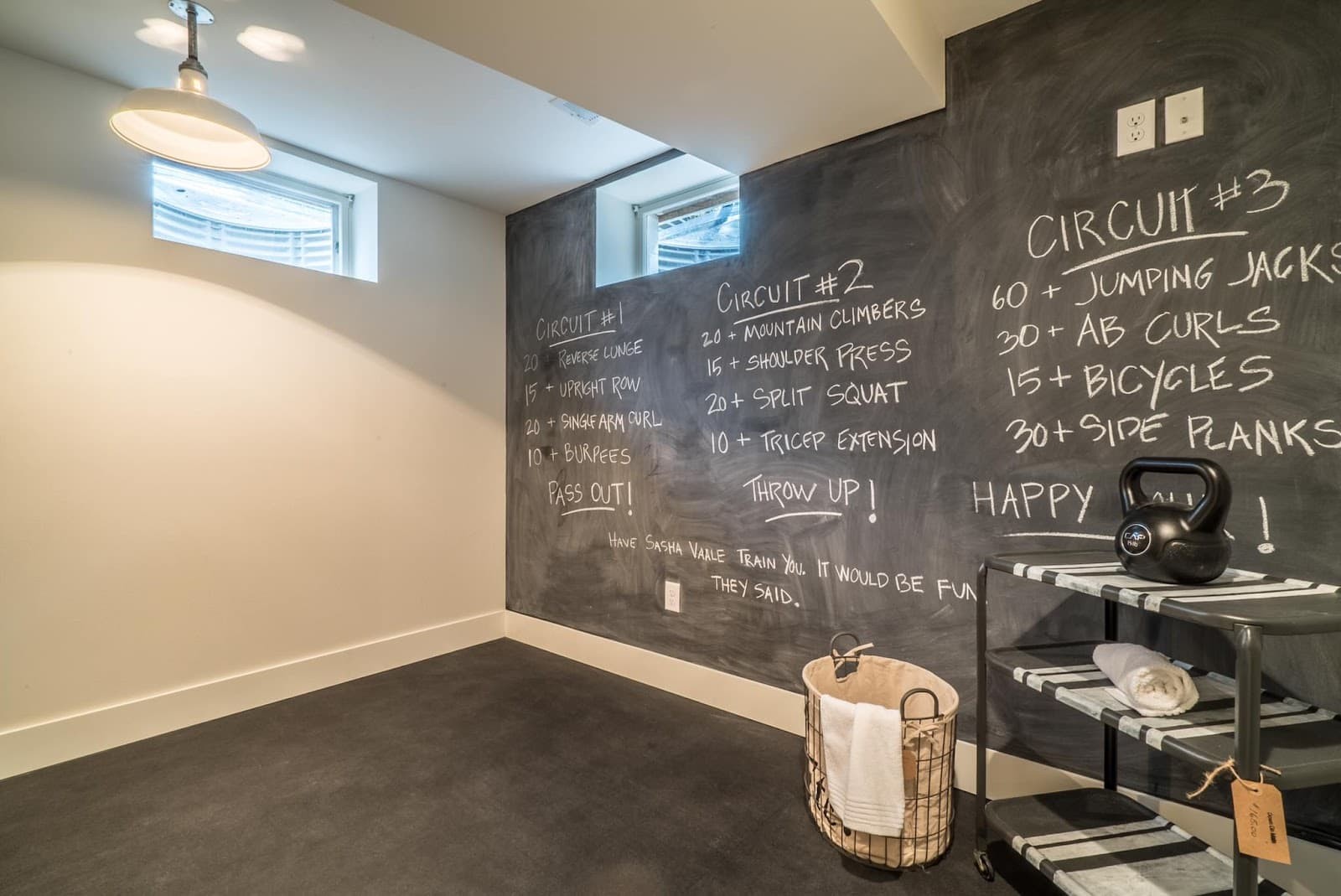
A simple yet effective approach to tracking your exercises or daily routine is to create a visual reminder on a wall. The idea is to have a quick glance at what you’re doing, ensuring you stay on track and avoid forgetting crucial steps midway through. To make this concept even more practical, consider using chalk paint to paint a board that can be easily wiped clean with a chalk eraser once your routine has been completed.
Your Gym Shouldn’t Take Up Much Room
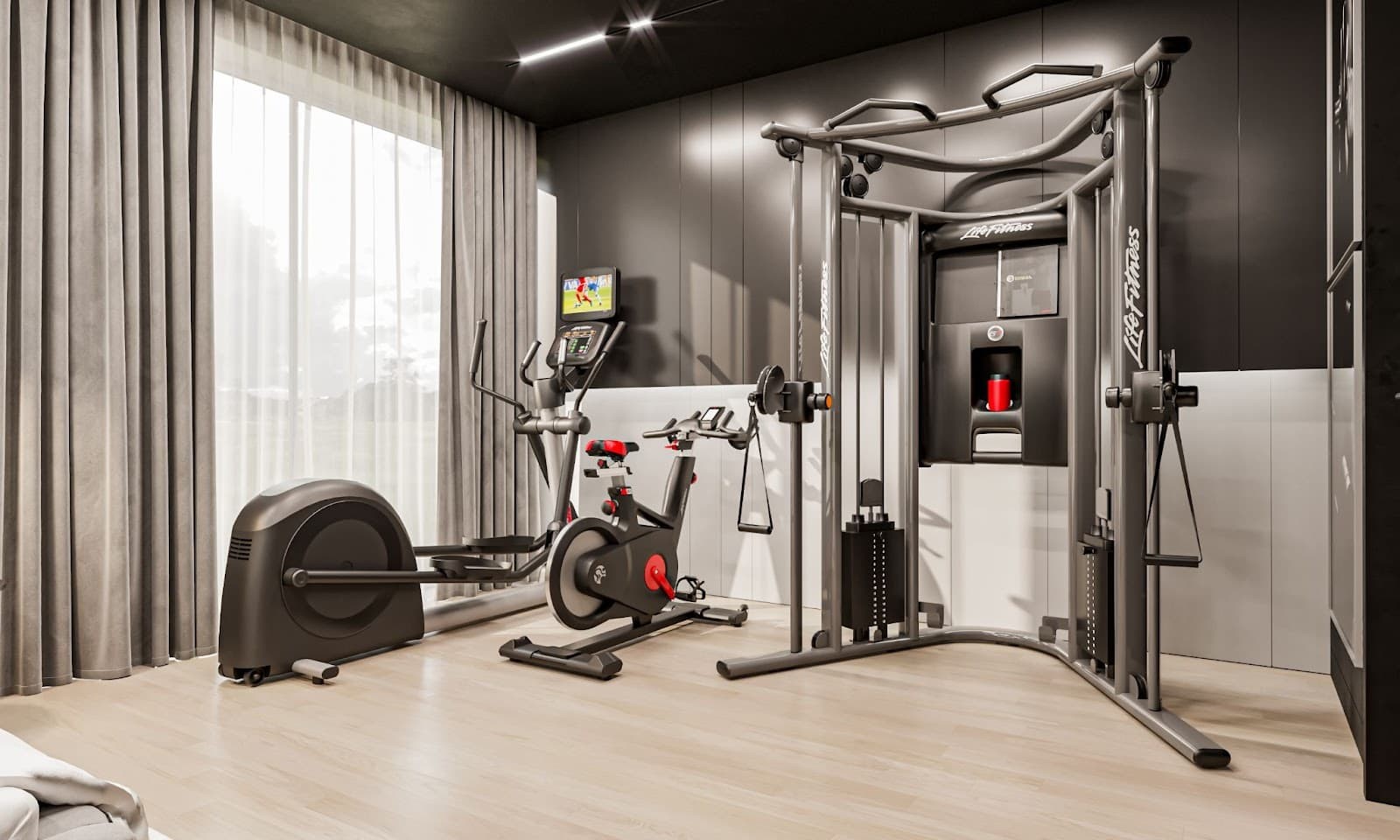
In many homes, finding extra space is a challenge. Even when used for just an hour or two daily, having a squat rack set up permanently can be quite impractical, taking up valuable room. However, with some creativity and strategic planning, it’s possible to make the most of your available space.
One effective approach is to combine folding equipment with wall storage solutions, allowing you to effortlessly stash your workout tools when not in use, keeping them out of the way and freeing up more space for other activities.
Paint Has the Power to Transform a Space
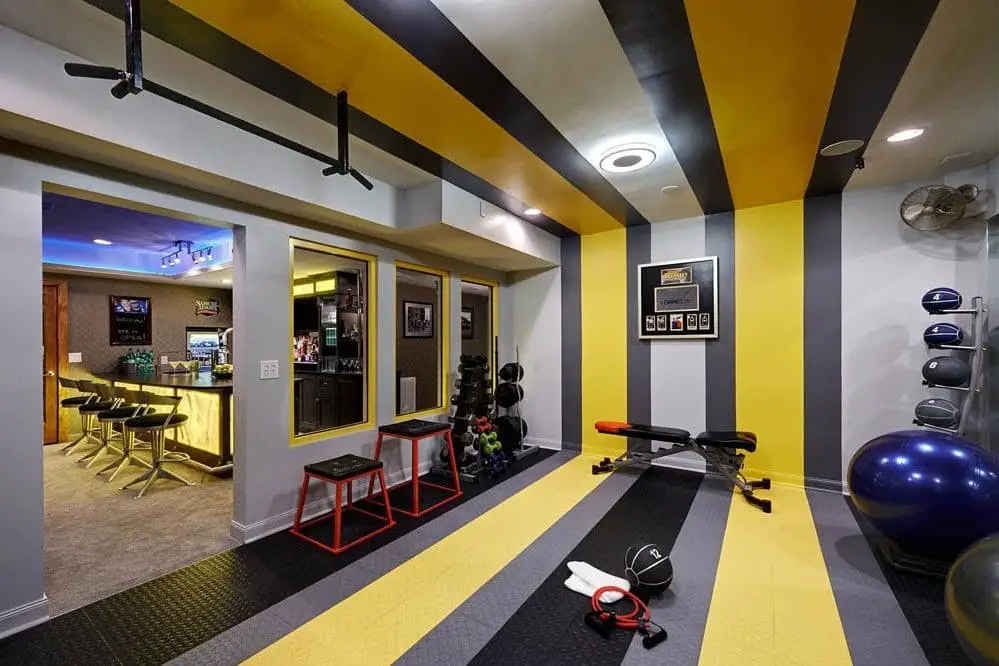
Give your basement gym a fresh makeover by selecting a paint color that evokes the desired ambiance. The perfect hue can instantly revitalize the space, creating an invigorating environment that motivates you to push yourself to new heights. Whether you’re looking to create a calm and focused atmosphere or one that’s energetic and stimulating, choosing the right color is key. Start by imagining the mood you want to achieve in your home gym, and then select a paint shade that complements it.
With a few strokes of the brush or spray, you’ll be well on your way to transforming the space into a haven for exercise and self-improvement.
Create a Basic Pullup Bar
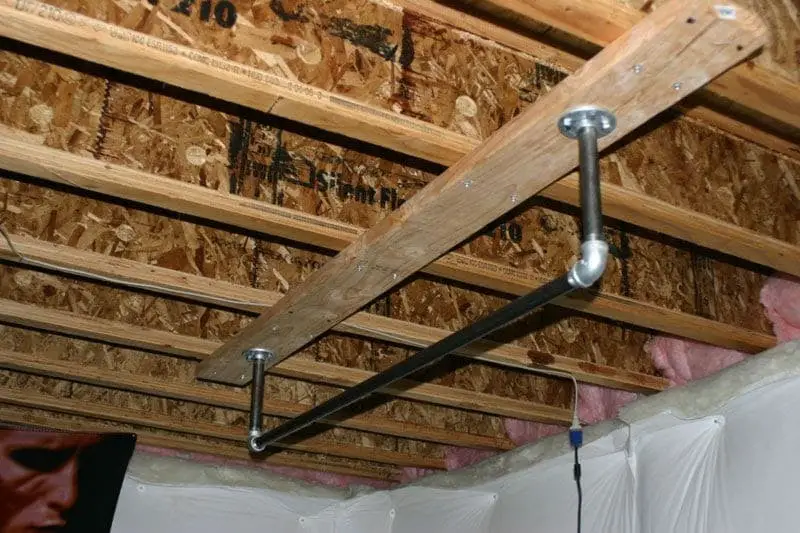
While traditional pullup bars provide a versatile platform for various exercises, their versatility is matched by the potential of DIY constructs. The reality is that most individuals could benefit from incorporating pullups into their workout routine, and the cost-effective nature of building your own bar makes it an accessible solution. In fact, with minimal investment, you can transform your basement gym into a functional space for strength training.
Make Workouts A Lot More Fun by Using Technology
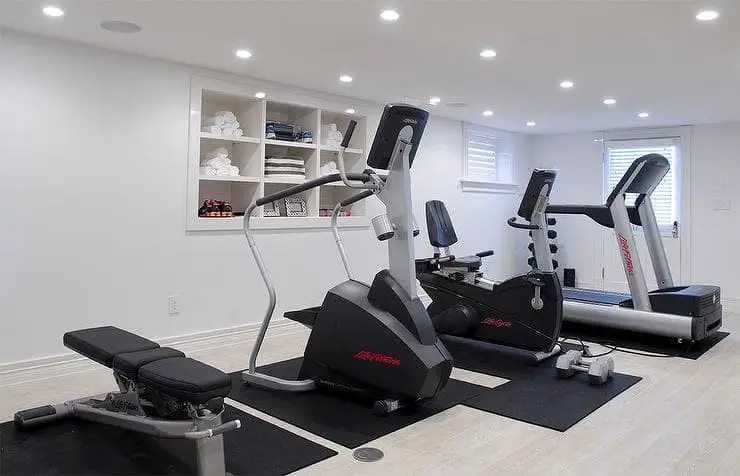
While some may argue that technology has no role in exercising, proponents of incorporating modern conveniences into physical activity suggest that any means to make training more enjoyable and increase frequency can be beneficial. For instance, using video content on a treadmill or listening to music while weightlifting can enhance the overall experience, ultimately leading to greater consistency and adherence to a workout routine.
Rather than buying a heavy bag, make one yourself.
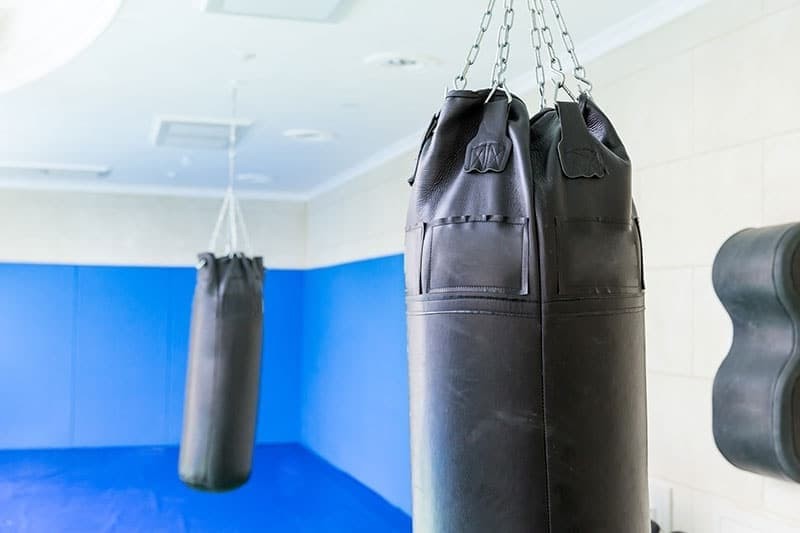
When building a basement gym, it’s easy to get caught up in thinking about purchasing expensive equipment to fill the space. However, thinking outside the box and getting creative can actually help you add more functionality without breaking the bank. One great example of this is repurposing old tires into a makeshift heavy bag. By converting these discarded items, you can create a piece of equipment that provides a similar workout to a store-bought heavy bag, but at a fraction of the cost.
Maintain a Clean Environment

In today’s world, maintaining a high level of cleanliness is more vital than ever. It’s not just about having a home gym setup; the importance of cleanliness extends beyond Joe Public’s workout routine. In fact, it’s crucial to prioritize cleanliness even in areas where you might not expect to find germs and bacteria. This includes your personal space and equipment after every workout. To ensure a hygienic environment, consider using an all-purpose disinfectant specifically designed for gym use.
By doing so, you’ll be able to effectively clean and sanitize your area and equipment, minimizing the risk of contamination and infection.
Choosing Home Gym Equipment
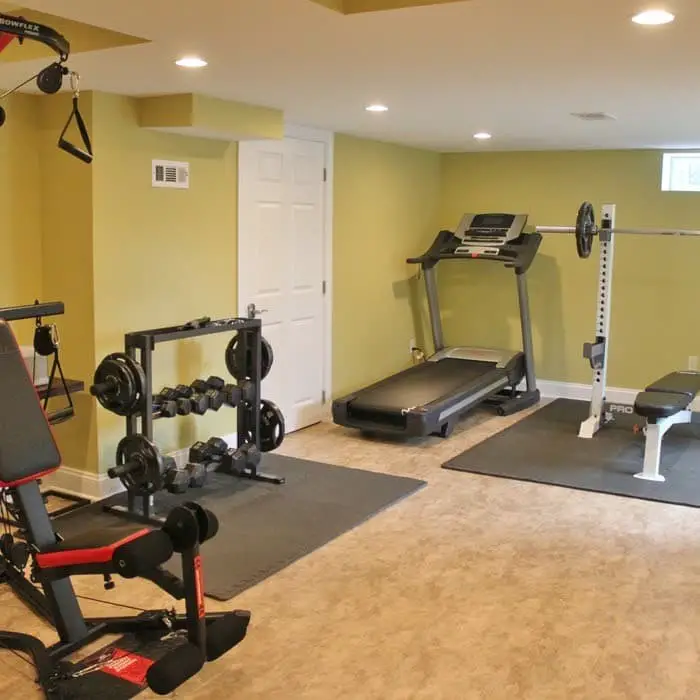
When it comes to converting a space into a home gym, selecting the right gear is paramount. A diverse range of machines and devices can offer unique exercises and health benefits, making it essential to consider what you hope to achieve in your basement fitness room and which types of equipment will be used most frequently.
Combination machines let you save space.
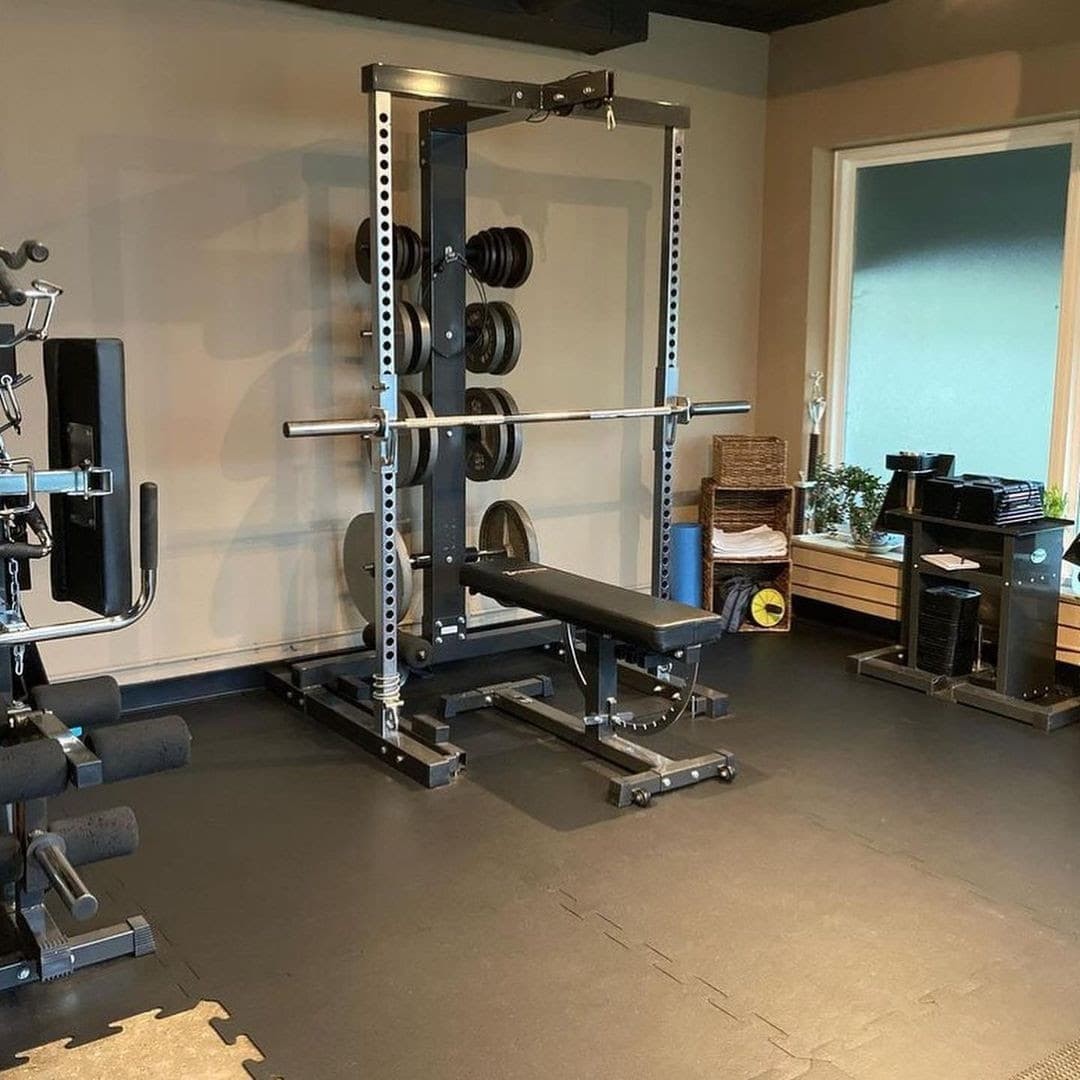
If you’re working with a cramped basement gym space, consider incorporating combination workout machines that target multiple areas simultaneously. This approach eliminates the need for a multitude of individual machines or pieces of equipment, each designed to work a specific body part. By adopting this strategy, you’ll not only save valuable floor space but also reduce the overall cost and time commitment required to maintain your home gym setup.
However, it’s essential to weigh the benefits against the drawbacks, as full-body training devices like the Bowflex can be more expensive than their targeted counterparts.
Basement Home Gym Storage Suggestions

When setting up a basement home gym, it’s essential to optimize storage space to accommodate your equipment. For smaller spaces like basements, clever storage solutions become even more crucial. Consider investing in barbell guns, medicine ball racks, dumbbells, and weight plate trees that can elevate your gear off the floor and maximize room usage.
Not only will this keep your workout area tidy, but it also has a profound psychological impact – making you want to head back down to your gym and motivating you to stick to your fitness goals.
Creating an Inspiring Environment
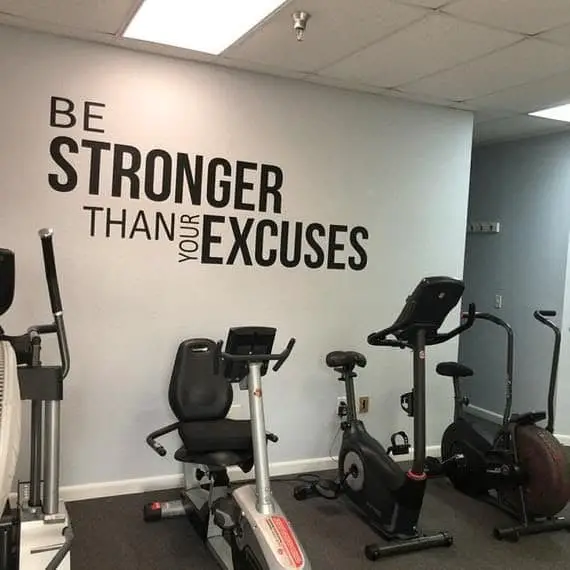
Transforming underutilized space into a home gym can be a game-changer for any fitness enthusiast. By creating an environment that is both visually appealing and functional, you’ll find yourself more motivated to push through challenging workouts. To achieve this, consider modifying the décor and color scheme to reflect your personal style.
This could involve adding a bold paint option or accent wall, incorporating thought-provoking wall art, or implementing efficient storage solutions for your equipment. By doing so, you’ll be able to create a space that not only accommodates your workout needs but also serves as a source of inspiration and motivation.
Tranquility Studio for Zen Yoga

Transform your at-home yoga studio into an oasis of serenity by incorporating natural elements and soothing ambiance. Consider pale green walls that bring the outdoors in, evoking a sense of calmness and freedom. Alternatively, choose a calming blue tone reminiscent of a clear sky, symbolizing the release of mental boundaries. To create a spa-like atmosphere, incorporate pure white curtains and teak wood storage furniture, while adding oxygen-rich plants to infuse the space with vitality.
Essential oils like frankincense, sandalwood, lavender, and sage can transport you to a state of relaxation when diffused through the air. Enhance the ambiance by playing calming music or ambient noises through a Bluetooth speaker. Choose nature-inspired paintings or images that encourage meditation as wall art, creating a sense of tranquility in your space.
If desired, dedicate a section of the studio to create a dedicated meditation room, allowing you to retreat into solitude and cultivate inner peace. By doing so, you’ll have created a stylish at-home yoga studio that invites mindfulness, self-reflection, and connection with nature.
Gym for Adrenaline Runners
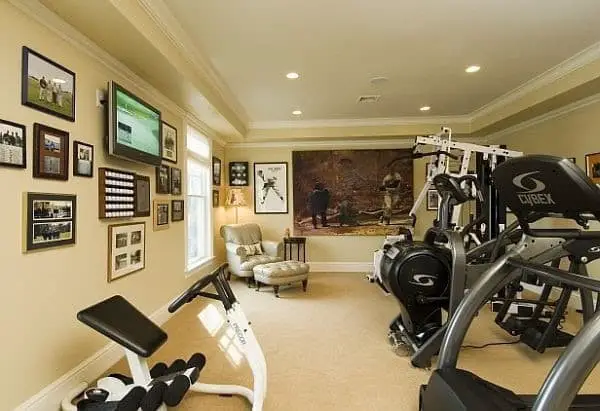
Transform your home gym into a high-energy space with bold and vibrant colors! Consider painting all four walls in an invigorating hue to boost your intensity during workouts. Alternatively, create a striking accent wall with a bright yellow or teal for a subtle yet energetic touch. Geometric wallpaper can also add a dramatic flair to the room.
To further customize your space and motivate you to reach new heights, incorporate speakers mounted on the walls that play energizing music to get those endorphins pumping! Additionally, display framed or painted motivational quotes and images of your favorite athletes to serve as constant reminders of your fitness goals.
Use used materials to save money.
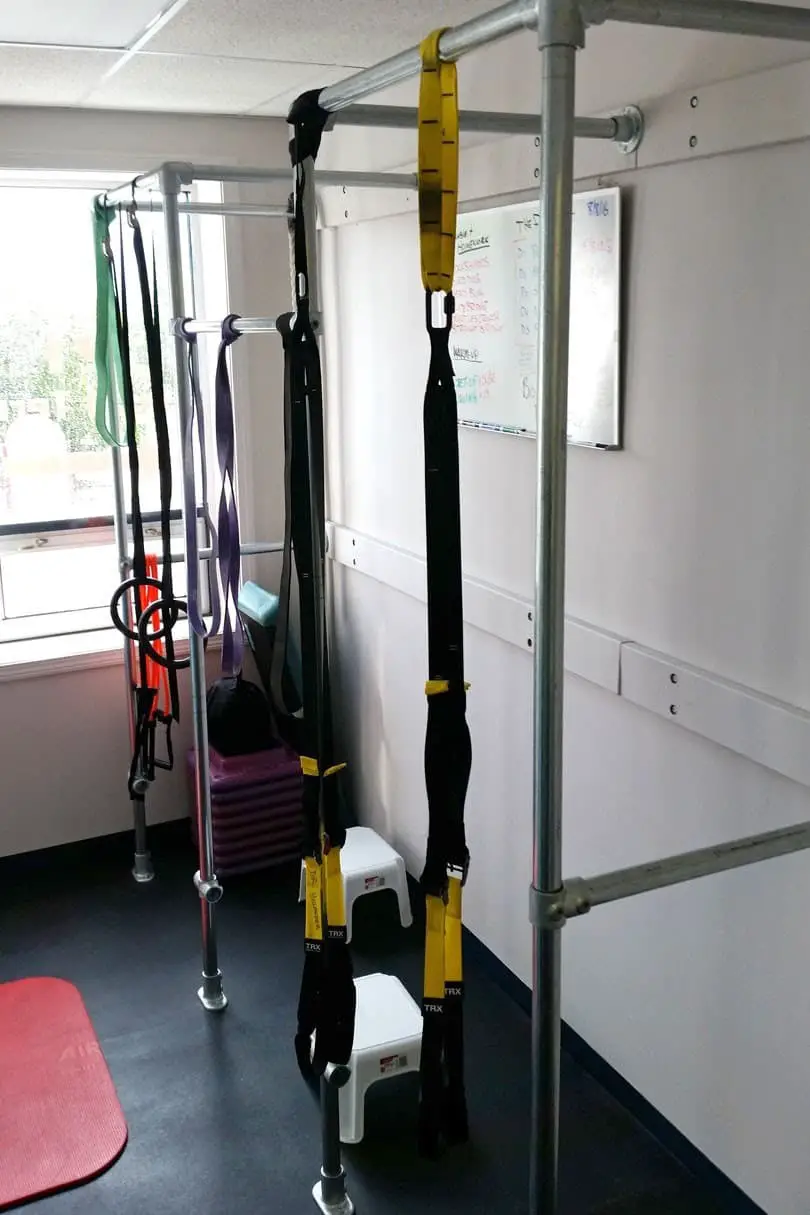
Think outside the box and explore creative alternatives to traditional home gym equipment. One cost-effective approach is to repurpose reclaimed materials into functional exercise tools. This innovative solution can significantly reduce the financial burden of setting up your basement gym, potentially saving you a considerable amount of money in the process.
Beginning with the end in mind is a good way to go.

Envisioning the final product is crucial when starting with an uninviting and unfinished basement. Close your eyes and mentally picture a warm, welcoming space – it’s this mental vision that drives your creative decisions. As you gaze upon the current state of your basement, try to imagine the transformation in store, knowing that the end result will be a cozy retreat or functional living area.
Keep the area well-lit.
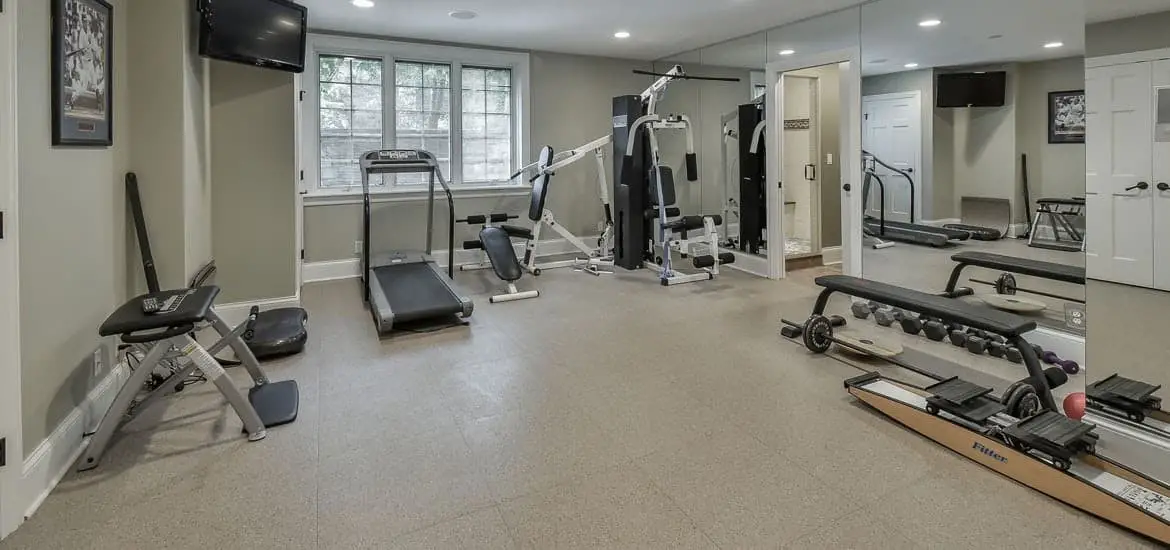
While some individuals appreciate the eerie ambiance of a basement gym, it’s essential to create an environment that fosters motivation and energy for all users. One way to achieve this is by incorporating ample natural light or bright lighting fixtures. When your basement gym feels welcoming and cheerful, you’ll be more likely to stay energized and motivated to reach your fitness goals.
Create a gym that fits in a corner.

While a spacious basement offers plenty of room for creativity, there’s no need to overcrowd the entire space with your home gym. Instead, consider designating a specific area for your workout setup, allowing you to create a functional and efficient space that still leaves room for storage or other activities. By adopting a minimalist approach, you can optimize the use of your basement without sacrificing functionality.
Peg Board Can Be Used To Create Customized Wall Storage
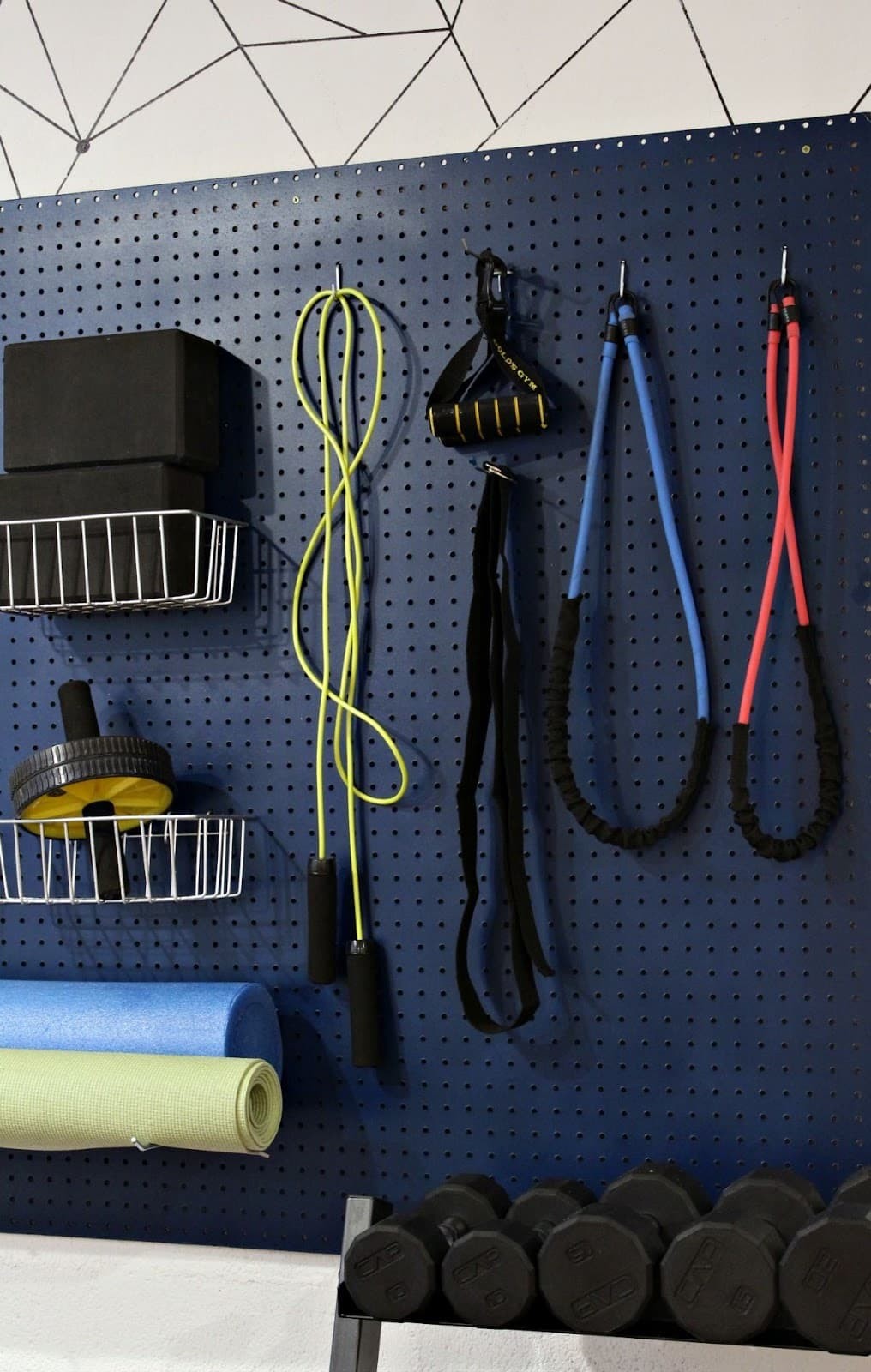
While it’s impossible to predict every twist and turn that life might bring, one thing is certain – your basement gym will likely undergo changes over time. Equipment may need to be rearranged or replaced, new exercises added, or even the layout itself altered. But with pegboard-lined walls, you’ll have a flexible foundation that can adapt to any change, ensuring your home gym remains functional and effective no matter what the future holds.
Construct a Gym You’ll Love
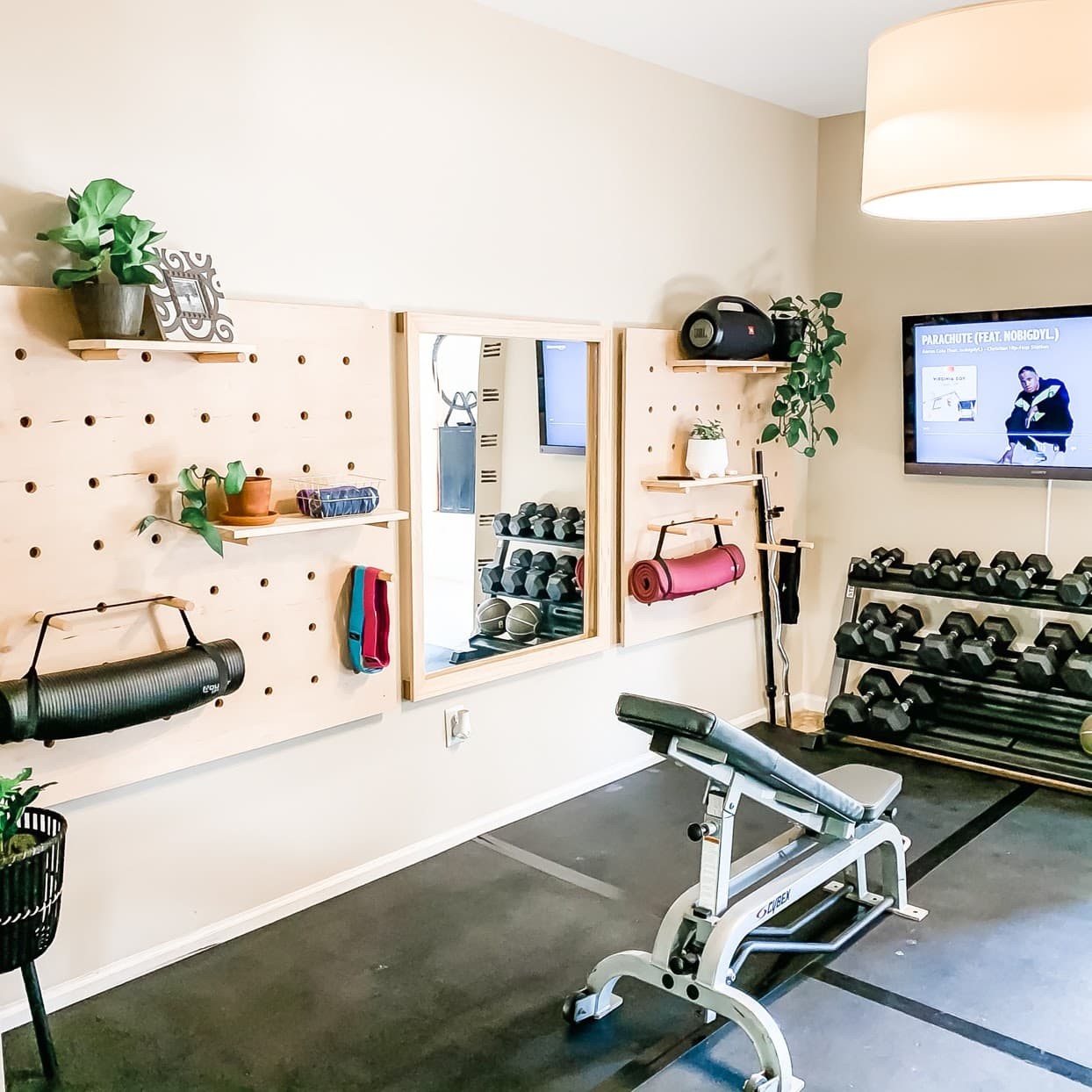
When creating a workout space in your basement, it’s essential to foster an environment that sparks joy and motivation. Instead of viewing exercises as tedious tasks to be endured, imagine yourself looking forward to your workouts. To achieve this, focus on making your gym a welcoming and enjoyable space that you genuinely want to spend time in. By doing so, you’ll be more likely to commit to regular exercise and make progress towards your fitness goals.
You just require the equipment that you will use.
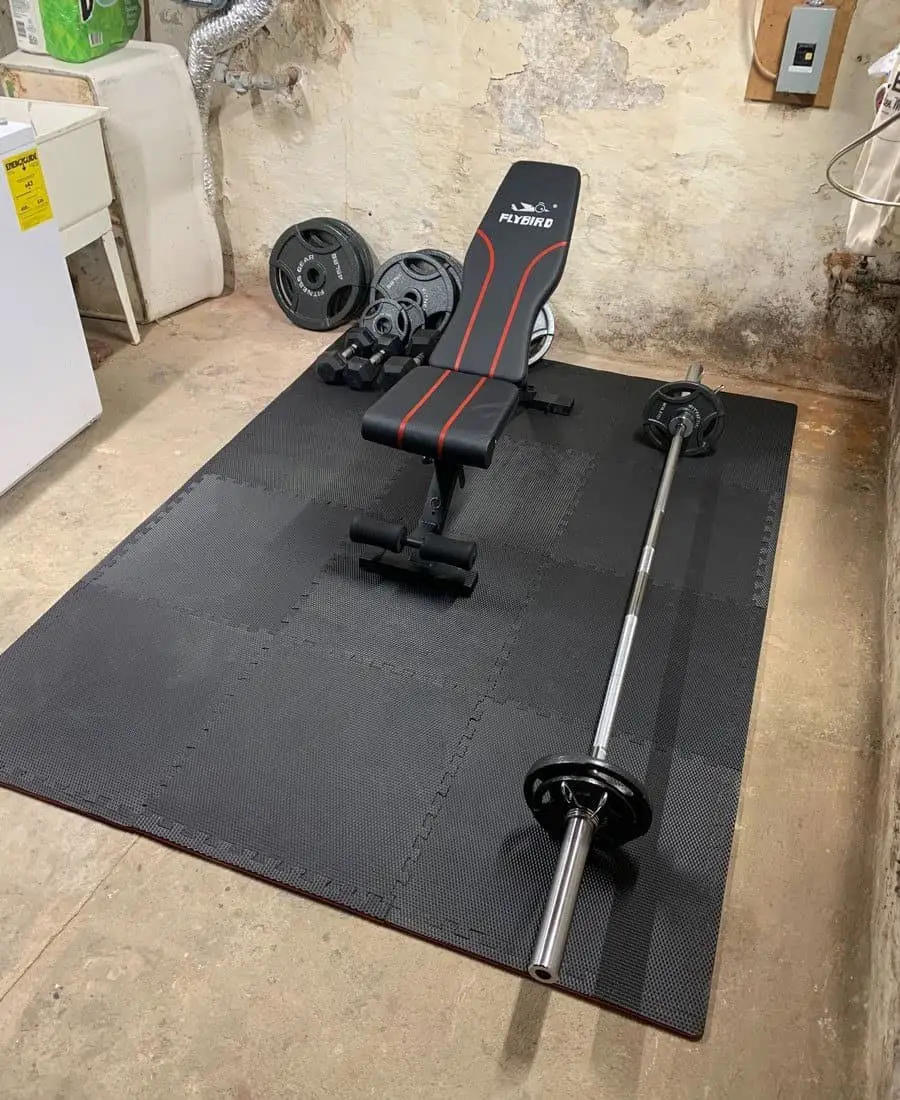
The effectiveness of any exercise routine hinges on more than just having the right equipment. Having an abundance of machines and weights at your disposal is irrelevant if you don’t develop a genuine affinity for using them. A better approach would be to identify a few pieces of equipment that you’re confident will become integral to your workout, allowing you to achieve greater results with increased consistency.
Workout Area With An Industrial Feel
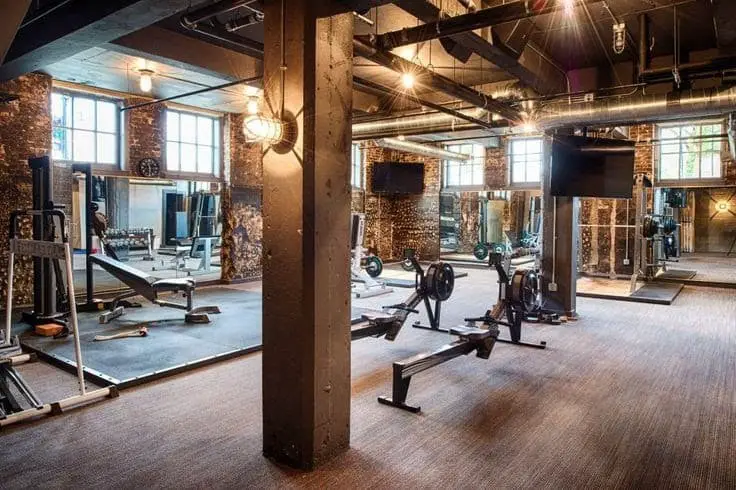
Transforming the basement or garage area of your gym into an urban oasis can be achieved by embracing the raw, industrial aesthetic. This involves incorporating elements like exposed concrete floors, bare ceilings, and a predominantly neutral color palette. One effective way to achieve this look is by painting the walls a crisp white or grey hue, which will provide a clean backdrop for the rugged cement flooring.
Alternatively, you could introduce warmth and texture by installing wood flooring that contrasts with the cool-toned walls. By embracing these design elements, you’ll be able to create a space that exudes an edgy, urban vibe.
Equipment should have enough room to move around.
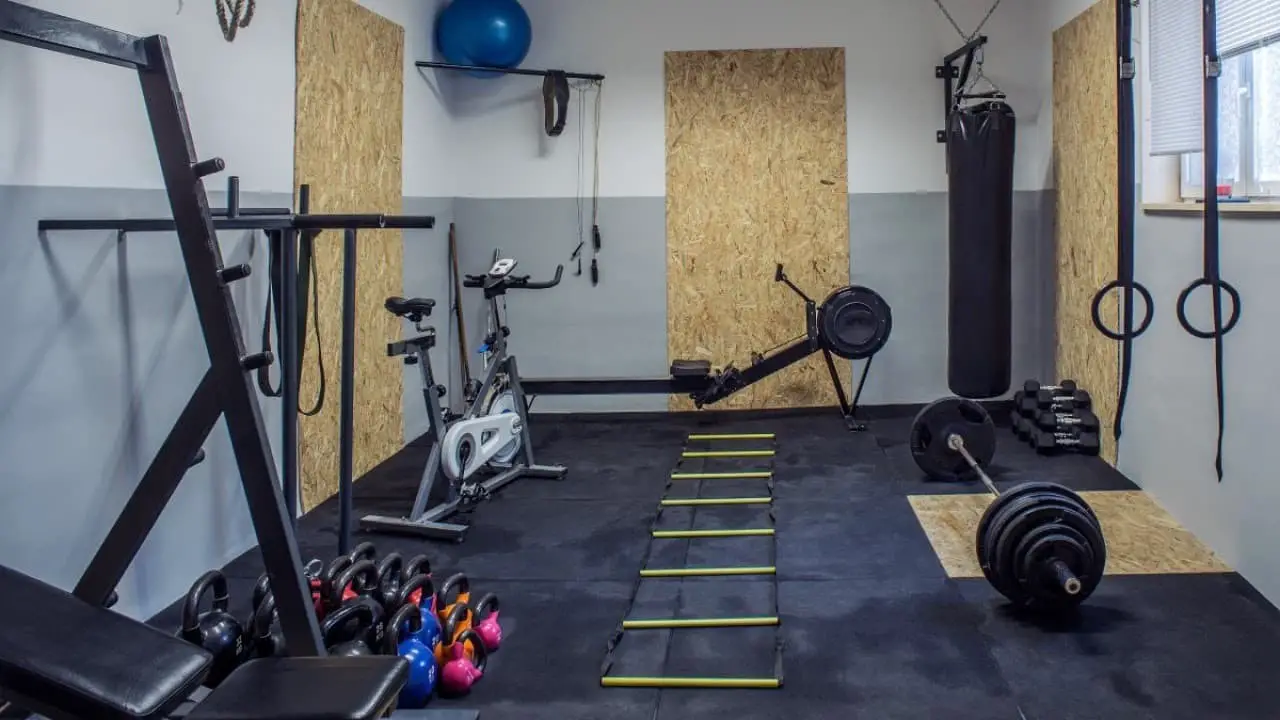
As you finalize your equipment selection, it’s essential to turn your attention to creating a functional and efficient home gym environment. Start by carefully assessing the available space to determine what can be comfortably accommodated within its boundaries. This evaluation will serve as the foundation for the decluttering process that follows.
With a clear understanding of what needs to go and what can stay, you’ll be well on your way to transforming your home into a personalized fitness haven.
DIY Monkey Bars
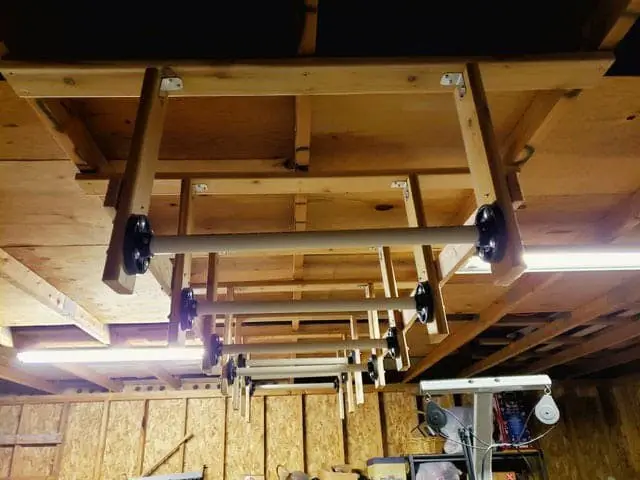
In recent times, monkey bars have transcended their traditional playground setting, offering an effective workout for individuals of all ages. The great news is that these can be easily constructed using commercial tubing, making them accessible to a wide range of users. Not only will they provide a fun and challenging activity for your children, but you’ll also find yourself joining in on the action as they frequently climb and play on the monkey bars.
Make Your Gym a Reflection of Your Interests
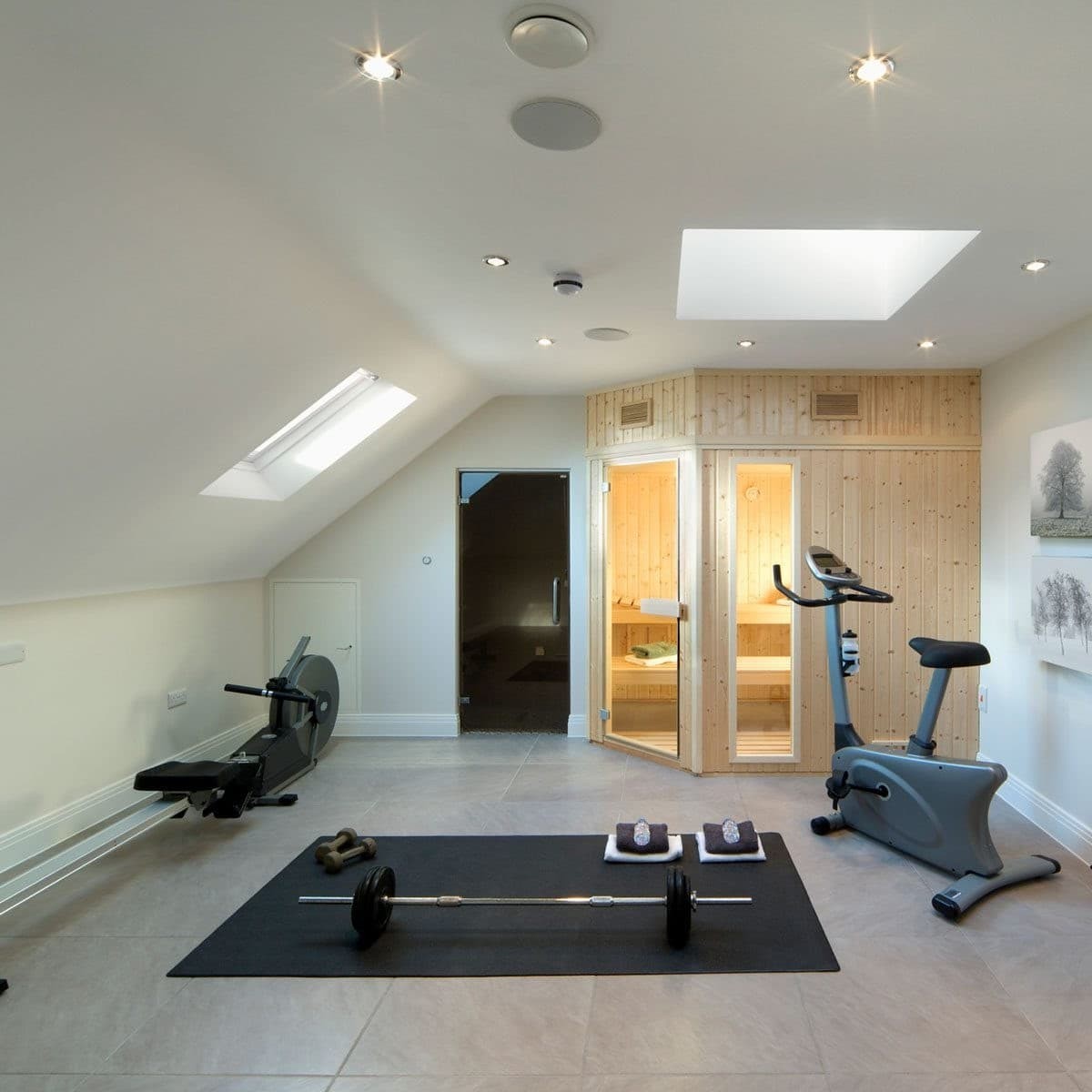
Upon closer inspection, you’ll notice that the room’s rear wall features an auto-belay mechanism and climbing grips, allowing for a seamless ascent up the wall. Additionally, the array of pull-up stations and TRX equipment scattered throughout suggests that someone is dedicated to honing their rock climbing skills. By incorporating elements that reflect your personal passions or interests into your basement gym design, you’ll find yourself more motivated to utilize it daily.
FAQs
How much does it cost to build a basement gym?
While the average cost of a home gym in the United States can vary significantly, ranging from around $3,500 to $25,000, it’s possible to create a functional and effective yoga space at a fraction of that cost. In fact, for as little as $100, you can set up a compact yet versatile practice area in even a small 50 square foot apartment. This can be achieved using affordable components such as foam tiles or mats, blocks, and straps – providing a perfect blend of functionality and affordability.
Is it healthy to workout in a basement?
In many garages and basements, the combination of humidity and heat during the summer months creates an environment that is ripe for pests and pathogens to flourish. To combat this issue, consider using a dehumidifier in conjunction with proper ventilation techniques, such as installing fans or utilizing exhaust systems.
By removing excess moisture from the air, you can significantly reduce the likelihood of attracting unwanted rodents and create a healthier space for exercise and other activities.
How do I turn my home gym into a basement?
To convert an unfinished basement into a functional home gym, follow these eleven crucial steps. First, measure your space to identify any potential issues and plan accordingly. Next, organize your belongings and clear out any clutter to create a sense of openness.
Resolve any lingering problems, such as water damage or structural concerns, before proceeding. Improving the air quality and airflow will also contribute to a more comfortable workout environment.
Install gym flooring to provide a sturdy and slip-resistant surface for your equipment. Adequate lighting is essential, so set up lights strategically throughout the space.
Assemble your tools and equipment, making sure they are securely fastened to prevent any accidents or damage. Position each device in its optimal location to facilitate smooth transitions between exercises.
For added stability and safety, secure your power rack according to the manufacturer’s instructions.
Finally, hang mirrors strategically around the space to enhance your workout experience and provide visual feedback on your form.
Conclusion
You might have limited space at home, but there’s often untapped potential in your basement that can be transformed into a functional gym area. The freedom to design and customize your own space is a major perk – you’re not limited by commercial gym constraints or noisy atmospheres. When you’ve completed the setup, you’ll have a private space where you can work out in comfort. Don’t be afraid to experiment with different layouts and configurations as you use it more regularly.
Perhaps one of these basement gym ideas has sparked your interest and motivated you to take action. Feel free to modify them to fit your unique needs and preferences. Ultimately, the goal is to create a space that genuinely excites and motivates you – after all, it’s for your personal enjoyment and fitness journey. By designing it around your interests and hobbies, you’ll be more likely to stick with your exercise routine and achieve your goals.

